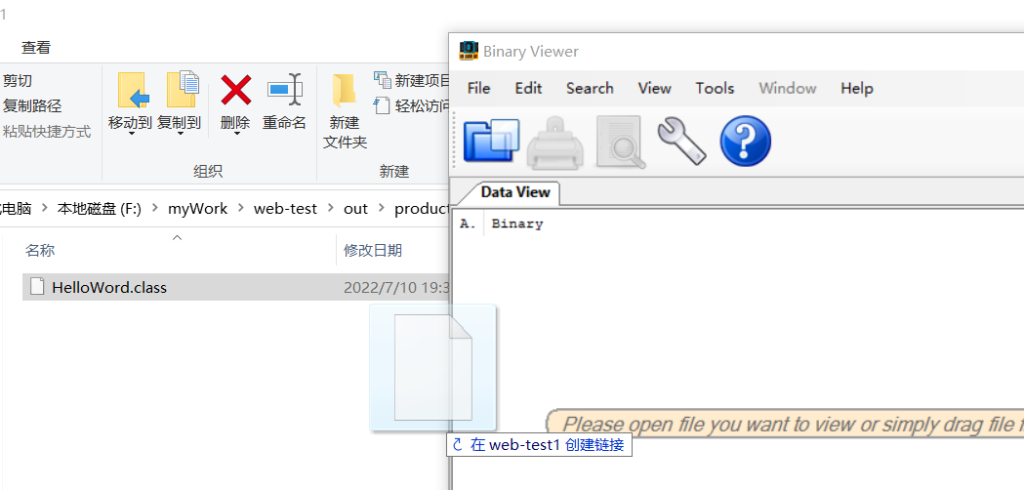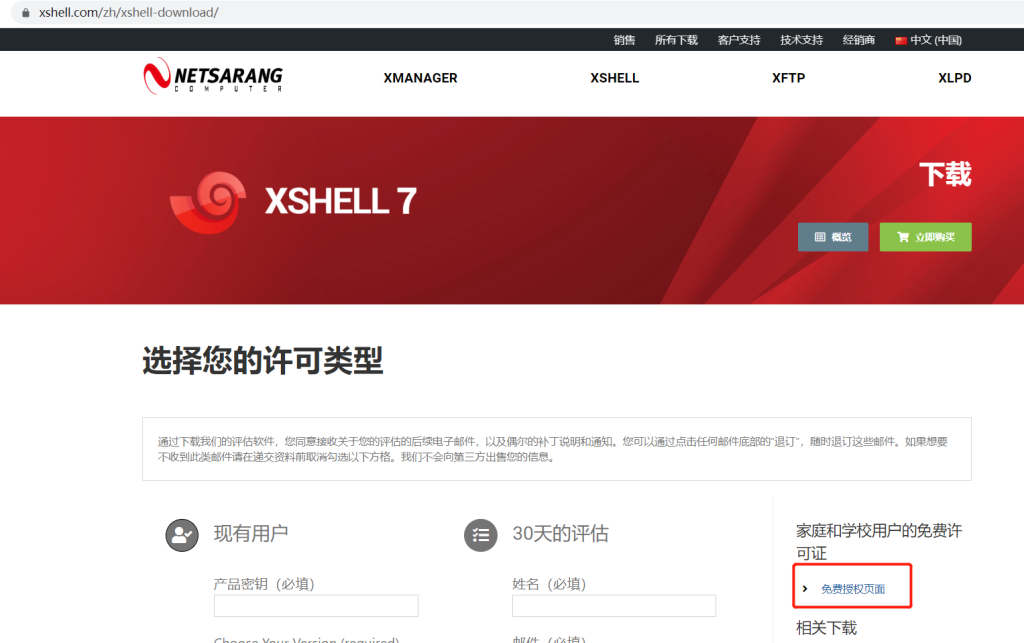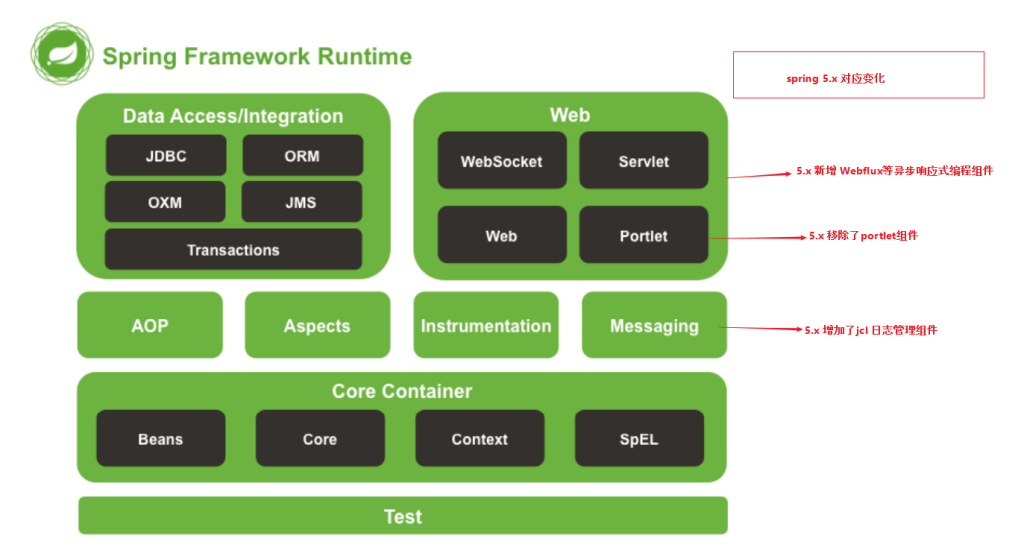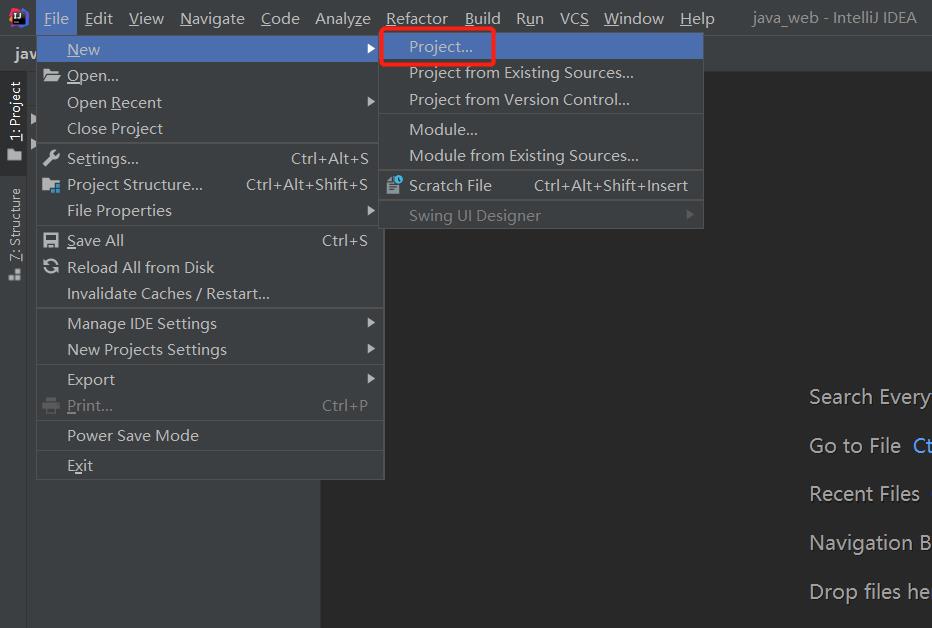AOP的本质也是为了解耦,它是一种设计思想。
1 什么是AOP(Aspect Oriented Programming)
AOP就是面向切面编程,可以说是OOP(Object Oriented Programming,面向对象编程)的补充和完善。OOP引入封装、继承、多态等概念来建立一种对象层次结构,用于模拟公共行为的一个集合。不过OOP允许开发者定义纵向的关系,但并不适合定义横向的关系,例如日志功能。日志代码往往横向地散布在所有对象层次中,而与它对应的对象的核心功能毫无关系对于其他类型的代码,如安全性、异常处理和透明的持续性也都是如此,这种散布在各处的无关的代码被称为横切(cross cutting),在OOP设计中,它导致了大量代码的重复,而不利于各个模块的重用。
利用 AOP 可以对业务逻辑的各个部分进行隔离,从而使得业务逻辑各部分之间的耦合度降低,提高程序的可重用性,同时提高了开发的效率。
通俗描述:不通过修改源代码方式,在主干功能里面添加新功能。
![图片[1]-Spring AOP-深吸氧](https://xiyang-blog.oss-cn-hangzhou.aliyuncs.com/blog/2022/11/image-18.png)
2 底层原理
- AOP底层使用了动态代理,有两种情况
- 有接口:使用 JDK 动态代理。创建接口实现类代理对象,增强类的方法。
- 没有接口:使用 CGLIB 动态代理。创建子类的代理对象,增强类的方法。
3 AOP 术语
![图片[2]-Spring AOP-深吸氧](https://xiyang-blog.oss-cn-hangzhou.aliyuncs.com/blog/2022/11/image-19.png)
3.1 连接点(Jointpoint)
类中哪些方法可以被增强,这些方法便成为连接点。
3.2 切入点(Pointcut)
类中实际被增强的方法,称之为切入点。
3.3 通知(Advice)
实际增强的逻辑部分称之为通知
- 通知有多种类型
- 前置通知(Before advice):在某连接点之前执行的通知,但这个通知不能阻止连接点之前的执行流程(除非它抛出一个异常)。
- 后置通知(After returning advice):在某连接点正常完成后执行的通知:例如,一个方法没有抛出任何异常,正常返回。
- 环绕通知(Around Advice):包围一个连接点的通知,如方法调用。这是最强大的一种通知类型。环绕通知可以在方法调用前后完成自定义的行为。它也会选择是否继续执行连接点或直接返回它自己的返回值或抛出异常来结束执行。
- 异常通知(After throwing advice):在方法抛出异常退出时执行的通知。
- 最终通知(After (finally) advice):当某连接点退出的时候执行的通知(不论是正常返回还是异常退出)。
3.4 切面
切面是动作,指把通知作用在切入点的过程。
4 AOP 配置方式
4.1 AspectJ是什么
AspectJ 不是 Spring 组成部分,AspectJ是一个java实现的AOP框架,它能够对java代码进行AOP编译(一般在编译期进行),让java代码具有AspectJ的AOP功能。
AspectJ是目前实现AOP框架中最成熟,功能最丰富的语言,AspectJ与java程序完全兼容,因此对于有java编程基础的工程师,上手和使用都非常容易。
4.2 Spring AOP和AspectJ是什么关系
Spring 框架一般都是基于 AspectJ 实现 AOP 操作,一般把 AspectJ 和 Spirng 框架一起使用,进行 AOP 操作。
4.3 配置方式
- 基于 xml 配置文件实现
- 基于@AspectJ注解(使用)
4.4 xml 配置
定义目标类
public class AopServiceImpl {
public void doMethod1() {
System.out.println("AopServiceImpl.doMethod1()");
}
public String doMethod2() {
System.out.println("AopServiceImpl.doMethod2()");
return "hello world";
}
public String doMethod3() throws Exception {
System.out.println("AopServiceImpl.doMethod3()");
throw new Exception("some exception");
}
}定义切面类
import org.aspectj.lang.ProceedingJoinPoint;
public class Aspect {
/**
* 环绕通知
*/
public Object doAround(ProceedingJoinPoint pjp) throws Throwable {
System.out.println("-----------------------");
System.out.println("环绕通知: 进入方法");
Object o = pjp.proceed();
System.out.println("环绕通知: 退出方法");
return o;
}
/**
* 前置通知
*/
public void doBefore() {
System.out.println("前置通知");
}
/**
* 后置通知
*/
public void doAfterReturning(String result) {
System.out.println("后置通知, 返回值: " + result);
}
/**
* 异常通知
*/
public void doAfterThrowing(Exception e) {
System.out.println("异常通知, 异常: " + e.getMessage());
}
/**
* 最终通知
*/
public void doAfter() {
System.out.println("最终通知");
}
}XML配置AOP
<?xml version="1.0" encoding="UTF-8"?>
<beans xmlns="http://www.springframework.org/schema/beans"
xmlns:xsi="http://www.w3.org/2001/XMLSchema-instance"
xmlns:aop="http://www.springframework.org/schema/aop"
xmlns:context="http://www.springframework.org/schema/context"
xsi:schemaLocation="http://www.springframework.org/schema/beans http://www.springframework.org/schema/beans/spring-beans.xsd
http://www.springframework.org/schema/aop http://www.springframework.org/schema/aop/spring-aop.xsd
http://www.springframework.org/schema/context http://www.springframework.org/schema/context/spring-context.xsd">
<context:component-scan base-package="beans" />
<aop:aspectj-autoproxy/>
<!-- 目标类 -->
<bean id="aopServiceImpl" class="beans.AopServiceImpl">
</bean>
<!-- 切面 -->
<bean id="aspect" class="beans.Aspect">
</bean>
<aop:config>
<!-- 配置切面 -->
<aop:aspect ref="aspect">
<!-- 配置切入点 -->
<aop:pointcut id="pointCutMethod" expression="execution(* beans.*.*(..))"/>
<!-- 环绕通知 -->
<aop:around method="doAround" pointcut-ref="pointCutMethod"/>
<!-- 前置通知 -->
<aop:before method="doBefore" pointcut-ref="pointCutMethod"/>
<!-- 后置通知;returning属性:用于设置后置通知的第二个参数的名称,类型是Object -->
<aop:after-returning method="doAfterReturning" pointcut-ref="pointCutMethod" returning="result"/>
<!-- 异常通知:如果没有异常,将不会执行增强;throwing属性:用于设置通知第二个参数的的名称、类型-->
<aop:after-throwing method="doAfterThrowing" pointcut-ref="pointCutMethod" throwing="e"/>
<!-- 最终通知 -->
<aop:after method="doAfter" pointcut-ref="pointCutMethod"/>
</aop:aspect>
</aop:config>
</beans>测试类
import beans.AopServiceImpl;
import org.springframework.context.support.ClassPathXmlApplicationContext;
public class App {
public static void main(String[] args) {
ClassPathXmlApplicationContext context = new ClassPathXmlApplicationContext("beans.xml");
AopServiceImpl aopService = context.getBean("aopServiceImpl", AopServiceImpl.class);
aopService.doMethod1();
aopService.doMethod2();
try {
aopService.doMethod3();
} catch (Exception e) {
// e.printStackTrace();
}
}
}输出结果
![图片[3]-Spring AOP-深吸氧](https://xiyang-blog.oss-cn-hangzhou.aliyuncs.com/blog/2022/11/image-21.png)
4.5 AspectJ 注解
4.5.1 注解
基于XML的声明式AspectJ存在一些不足,需要在Spring配置文件配置大量的代码信息,为了解决这个问题,Spring 使用了@AspectJ框架为AOP的实现提供了一套注解。
| 注解名称 | 解释 |
| @Aspect | 用来定义一个切面。 |
| @pointcut | 用于定义切入点表达式。在使用时还需要定义一个包含名字和任意参数的方法签名来表示切入点名称,这个方法签名就是一个返回值为void,且方法体为空的普通方法。 |
| @Before | 用于定义前置通知,相当于BeforeAdvice。在使用时,通常需要指定一个value属性值,该属性值用于指定一个切入点表达式(可以是已有的切入点,也可以直接定义切入点表达式)。 |
| @AfterReturning | 用于定义后置通知,相当于AfterReturningAdvice。在使用时可以指定pointcut / value和returning属性,其中pointcut / value这两个属性的作用一样,都用于指定切入点表达式。 |
| @Around | 用于定义环绕通知,相当于MethodInterceptor。在使用时需要指定一个value属性,该属性用于指定该通知被植入的切入点。 |
| @After-Throwing | 用于定义异常通知来处理程序中未处理的异常,相当于ThrowAdvice。在使用时可指定pointcut / value和throwing属性。其中pointcut/value用于指定切入点表达式,而throwing属性值用于指定-一个形参名来表示Advice方法中可定义与此同名的形参,该形参可用于访问目标方法抛出的异常。 |
| @After | 用于定义最终final 通知,不管是否异常,该通知都会执行。使用时需要指定一个value属性,该属性用于指定该通知被植入的切入点。 |
| @DeclareParents | 用于定义引介通知,相当于IntroductionInterceptor (不要求掌握)。 |
4.5.2 实现方式
Spring AOP的实现方式是动态织入,动态织入的方式是在运行时动态将要增强的代码织入到目标类中,这样往往是通过动态代理技术完成的;如Java JDK的动态代理(Proxy,底层通过反射实现)或者CGLIB的动态代理(底层通过继承实现),Spring AOP采用的就是基于运行时增强的代理技术。
4.5.3 基于JDK动态代理
添加依赖
<dependency>
<groupId>org.aspectj</groupId>
<artifactId>aspectjweaver</artifactId>
<version>1.9.2</version>
</dependency>配置类
import org.springframework.context.annotation.ComponentScan;
import org.springframework.context.annotation.Configuration;
import org.springframework.context.annotation.EnableAspectJAutoProxy;
@Configuration
@ComponentScan(basePackages = "beans")
@EnableAspectJAutoProxy(proxyTargetClass = true)
public class SpringConfig {
}定义接口
public interface AopService {
void doMethod1();
String doMethod2();
String doMethod3() throws Exception;
}实现类
@Service
public class AopServiceImpl implements AopService{
@Override
public void doMethod1() {
System.out.println("AopServiceImpl.doMethod1()");
}
@Override
public String doMethod2() {
System.out.println("AopServiceImpl.doMethod2()");
return "hello world";
}
@Override
public String doMethod3() throws Exception {
System.out.println("AopServiceImpl.doMethod3()");
throw new Exception("some exception");
}
}定义切面
import org.aspectj.lang.ProceedingJoinPoint;
import org.aspectj.lang.annotation.*;
import org.springframework.context.annotation.EnableAspectJAutoProxy;
import org.springframework.stereotype.Component;
@EnableAspectJAutoProxy
@Component
@Aspect
public class AspectTest {
@Pointcut("execution(* beans.*.*(..))")
private void pointCutMethod() {
}
/**
* 环绕通知
*/
@Around("pointCutMethod()")
public Object doAround(ProceedingJoinPoint pjp) throws Throwable {
System.out.println("-----------------------");
System.out.println("环绕通知: 进入方法");
Object o = pjp.proceed();
System.out.println("环绕通知: 退出方法");
return o;
}
/**
* 前置通知
*/
@Before("pointCutMethod()")
public void doBefore() {
System.out.println("前置通知");
}
/**
* 后置通知
*/
@AfterReturning(pointcut = "pointCutMethod()", returning = "result")
public void doAfterReturning(String result) {
System.out.println("后置通知, 返回值: " + result);
}
/**
* 异常通知
*/
@AfterThrowing(pointcut = "pointCutMethod()", throwing = "e")
public void doAfterThrowing(Exception e) {
System.out.println("异常通知, 异常: " + e.getMessage());
}
/**
* 最终通知
*/
@After("pointCutMethod()")
public void doAfter() {
System.out.println("最终通知");
}
}4.5.4 基于Cglib动态代理
实现类
import org.springframework.stereotype.Service;
@Service
public class AopServiceImpl{
public void doMethod1() {
System.out.println("AopServiceImpl.doMethod1()");
}
public String doMethod2() {
System.out.println("AopServiceImpl.doMethod2()");
return "hello world";
}
public String doMethod3() throws Exception {
System.out.println("AopServiceImpl.doMethod3()");
throw new Exception("some exception");
}
}其他配置与JDK代理相同,唯一区别实现类不需要实现接口
4.6 通用切入点表达式
// 任意公共方法的执行:
execution(public * *(..))
// 任何一个名字以“set”开始的方法的执行:
execution(* set*(..))
// AccountService接口定义的任意方法的执行:
execution(* com.sxy.service.AccountService.*(..))
// 在service包中定义的任意方法的执行:
execution(* com.sxy.service.*.*(..))
// 在service包或其子包中定义的任意方法的执行:
execution(* com.sxy.service..*.*(..))
// 在service包中的任意连接点(在Spring AOP中只是方法执行):
within(com.sxy.service.*)
// 在service包或其子包中的任意连接点(在Spring AOP中只是方法执行):
within(com.sxy.service..*)
// 实现了AccountService接口的代理对象的任意连接点 (在Spring AOP中只是方法执行):
this(com.sxy.service.AccountService)// 'this'在绑定表单中更加常用
// 实现AccountService接口的目标对象的任意连接点 (在Spring AOP中只是方法执行):
target(com.sxy.service.AccountService) // 'target'在绑定表单中更加常用
// 任何一个只接受一个参数,并且运行时所传入的参数是Serializable 接口的连接点(在Spring AOP中只是方法执行)
args(java.io.Serializable)
// 'args'在绑定表单中更加常用; 请注意在例子中给出的切入点不同于 execution(* *(java.io.Serializable)): args版本只有在动态运行时候传入参数是Serializable时才匹配,而execution版本在方法签名中声明只有一个 Serializable类型的参数时候匹配。
// 目标对象中有一个 @Transactional 注解的任意连接点 (在Spring AOP中只是方法执行)
@target(org.springframework.transaction.annotation.Transactional)// '@target'在绑定表单中更加常用
// 任何一个目标对象声明的类型有一个 @Transactional 注解的连接点 (在Spring AOP中只是方法执行):
@within(org.springframework.transaction.annotation.Transactional) // '@within'在绑定表单中更加常用
// 任何一个执行的方法有一个 @Transactional 注解的连接点 (在Spring AOP中只是方法执行)
@annotation(org.springframework.transaction.annotation.Transactional) // '@annotation'在绑定表单中更加常用
// 任何一个只接受一个参数,并且运行时所传入的参数类型具有@Classified 注解的连接点(在Spring AOP中只是方法执行)
@args(com.xyz.security.Classified) // '@args'在绑定表单中更加常用
// 任何一个在名为'tradeService'的Spring bean之上的连接点 (在Spring AOP中只是方法执行)
bean(tradeService)
// 任何一个在名字匹配通配符表达式'*Service'的Spring bean之上的连接点 (在Spring AOP中只是方法执行)
bean(*Service)




![The server selected protocol version TLS10 is not accepted by client preferences [TLS12]-深吸氧](https://xiyang-blog.oss-cn-hangzhou.aliyuncs.com/blog/2022/02/20220224201351.png)







暂无评论内容